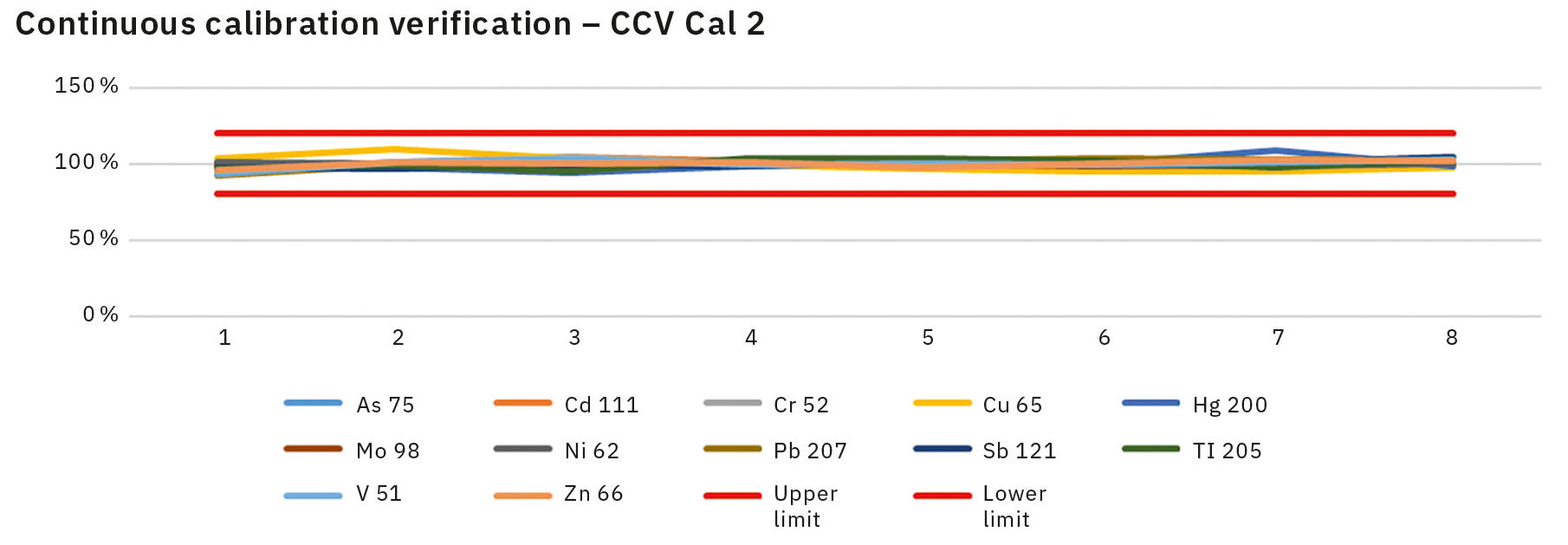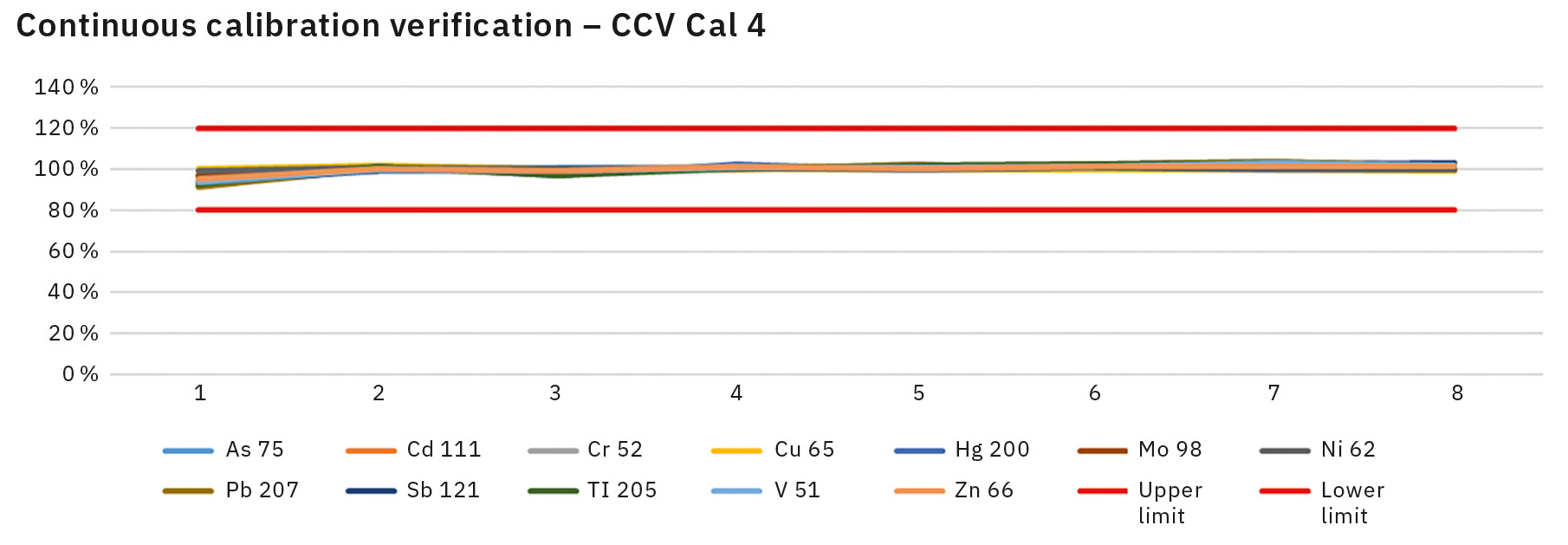Urban mining – sustainable and safe
Germany´s new Substitute Building Materials Ordinance is forcing laboratories to rethink
Dr. Johannes Hesper, Shimadzu Europa GmbH
Nico Gilles, Shimadzu Deutschland GmbH
Growing environmental awareness and a shortage of raw materials are causing the construction industry to rethink. More and more secondary raw materials are being used in construction and redevelopment projects. The new Substitute Building Materials Ordinance (Ersatzbaustoffverordnung or EVB) [1] lays down the legal framework to ensure that these materials do not pose a risk to people or the environment. Part of this also includes lowering the limits for many heavy metals. This has consequences for test laboratories, since they will have to use new methods and equipment in the future in order to stay ahead of the competition.
Versatile, sustainable and can be used in many different ways: That’s what substitute building materials are. They are made from secondary raw materials and are used in the construction industry as a replacement for primary raw materials. These include materials such as ash/slag, waste sand, excavated soil and recycled materials. Using these reduces the demand for primary raw materials, lessens the amount of waste and minimizes the environmental impact.
Applications for substitute building materials
In road construction, where concrete, bricks and asphalt in recycled form can be used as a substructure for roads, sidewalks and parking lots as well as a filling material in civil engineering. In building construction, where recycled gypsum can be used in plasterboard, for example. Concrete and bricks can be recycled as aggregates in new concrete. In the redevelopment and recultivation of landfills and mining areas, where substitute building materials can help to improve soil quality and reduce the impact on the environment.
In order to further promote the use of these materials and, in doing so, strengthen the circular economy, Germany developed the Substitute Building Materials Ordinance (EBV), which came into force on August 1, 2023. It introduces significant changes in how substitute building materials should be used but also ensures greater legal certainty for users and recycling companies.
But it’s not just Germany, in fact, many countries throughout Europe are pursuing regulations and standards for substitute building materials with similar goals to the German EBV.
In the United Kingdom (UK), the “Quality Protocol for the production of aggregates from inert waste” applies. This protocol defines quality standards for the use of inert waste as a substitute for natural aggregates. It contains essential guidelines on how inert waste should be used and ensures that the granulates obtained from it meet certain standards. In the Netherlands, the Soil Quality Decree (known locally as the Besluit bodemkwaliteit) regulates the use of soil and dredged material. It sets limit values for pollutants and stipulates that the materials must not pose a risk to human health. France has a decree on the valorization of excavated material and sand (Décret sur la Valorisation des Déblais et des Sables), which sets out conditions for the use of excavation and sand materials in the construction industry. And in Belgium, the Flemish regulation on the sustainable management of material cycles and waste (VLAREMA) regulates the use of substitute building materials and sets limit values for various pollutants.
All aim to promote the use of substitute building materials while ensuring high standards of safety and environmental compatibility. They highlight the fact that striving for sustainability and environmental protection in the construction industry is a high priority for many countries throughout Europe.
New methods, new devices
Although this makes things safer and easier for recyclers and construction companies, it means new procedures and maybe even necessary updates for many testing laboratories. This is because one important change concerns the limit values for the soil material and dredged material group. The new ordinance sets stricter limits for a range of pollutants, including heavy metals such as lead, cadmium, thallium and mercury.
The lower limit values that have been introduced, especially for cadmium and thallium, require many laboratories to rethink their analytical methods, as the frequently used inductively coupled plasma optical emission spectrometry (ICP-OES) technique does not meet the required limit values. In fact, the proven atomic absorption spectrometry (AAS) is only intended for determining mercury in the new regulation.
This means that two analysis techniques that were frequently used before have to be replaced. The inductively coupled plasma mass spectrometry (ICP-MS) technique is particularly good here, as it offers very high sensitivity and accuracy. It can detect even the smallest amounts of heavy metals present in a sample (ppb and smaller).
Nico Gilles, Product Specialist for Elemental Spectroscopy at Shimadzu Germany, has developed a new method that allows testing laboratories to easily achieve robust and stable measurement results using ICP-MS despite difficult sample matrices. Testing was carried out on the Shimadzu ICPMS. The samples had to pass all the required tests for long-term stability, recovery rate and detection limit.
The optimized torch design of the new ICPMS-2040 and -2050 series also ensures low argon consumption and increased sample throughput.
Method development
When developing the method, all samples were taken and processed as specified in the Substitute Building Materials Ordinance. The required aqueous eluate was prepared according to DIN 19529, and the aqua regia digestion was carried out according to DIN 13657.
In ICP-MS, an internal standard is normally added to the previously dissolved sample to compensate for possible sources of error during the analysis. This internal reference is therefore an important part of quality assurance, which increases the reliability of the measurement results.
The liquid sample is transformed into a fine aerosol via a cooled spray chamber, which is then ionized in hot argon plasma. The resulting ions are then separated in a mass spectrometer according to their mass-to-charge ratio and determined by the detector within a specified integration time. In this way, very low concentrations of the elements under investigation can be determined precisely. The elements relevant for the analysis of soil material and dredged material are arsenic, lead, cadmium, chromium, copper, nickel, mercury, thallium and zinc in the solid material as well as antimony, molybdenum and vanadium in the eluate.
Verifying the long-term stability using CCV
It is possible to continuously verify the method by regularly measuring calibration standards during the analysis in what is known as “continuous calibration verification” (CCV). The results of this long-term observation are shown below in Figures 2 and 3 for calibration standards Cal 2 and Cal 4. The limits shown (red lines) are 70 % and 130 % in accordance with DIN EN 16171:2017 and were not exceeded in any case.
Verification: CRM recovery rate
An aqua regia digestion of the certified reference material (CRM) BAM-U115 was carried out in order to be able to externally verify the measurement results, reviewing the method at the same time. As with the CCV, measurements were taken every hour and compared with each other. The results were all within the tolerance range.
Aside from the long-term stability and recovery rate, of course it is also necessary to comply with the detection and quantification limits in order to meet the EBV. As already mentioned at the beginning, the new Substitute Building Materials Ordinance with its very low limit values, especially for cadmium and thallium, places demands on the measurement technology that can no longer be implemented with ICP-OES.
Detection limits
In accordance with the requirements of the Substitute Building Materials Ordinance, the detection limit of the method may not exceed one third of the specified limit value of the corresponding element. As a result, the respective limit values of the Substitute Building Materials Ordinance were used as the limit of determination. Thanks to the ICP-MS method developed by Shimadzu, the result was that the required limit values, i.e. limit of detection (LoD) and limit of quantification (LoQ), could be reliably met with maximum robustness and long-term stability at the same time (Table 1).
The introduction of the new Substitute Building Materials Ordinance for soil material and dredged material in Germany on August 1, 2023 has placed new demands on testing laboratories. Although purchasing a new analyzer may indeed be necessary, Shimadzu’s development work has provided laboratories with a method of reliably complying with the specified limit values using ICP-MS. This means they can continue to fulfill their important task of ensuring the safety of substitute building materials.


ILoD [µg/L] |
ILoQ [µg/L] |
MLoQ [µg/kg] |
MLoQ [mg/kg] |
EBV-LoD [mg/kg] |
EBV-LoQ [mg/kg] |
||
As |
0.04 |
0.15 |
0.04 |
0.15 |
3.33 |
10.00 |
✔ |
Cd |
0.02 |
0.06 |
0.02 |
0.06 |
0.13 |
0.40 |
✔ |
Cr |
0.11 |
0.38 |
0.11 |
0.38 |
10.00 |
30.00 |
✔ |
Cu |
0.97 |
3.25 |
0.97 |
3.25 |
6.67 |
20.00 |
✔ |
Hg |
0.00 |
0.00 |
0.00 |
0.00 |
0.07 |
0.20 |
✔ |
Ni |
0.23 |
0.75 |
0.08 |
0.27 |
5.00 |
15.00 |
✔ |
Pb |
0.08 |
0.27 |
0.01 |
0.02 |
13.33 |
40.00 |
✔ |
Tl |
0.01 |
0.02 |
0.00 |
0.01 |
0.17 |
0.50 |
✔ |
Zn |
0.04 |
0.13 |
0.10 |
0.33 |
20.00 |
60.00 |
✔ |
